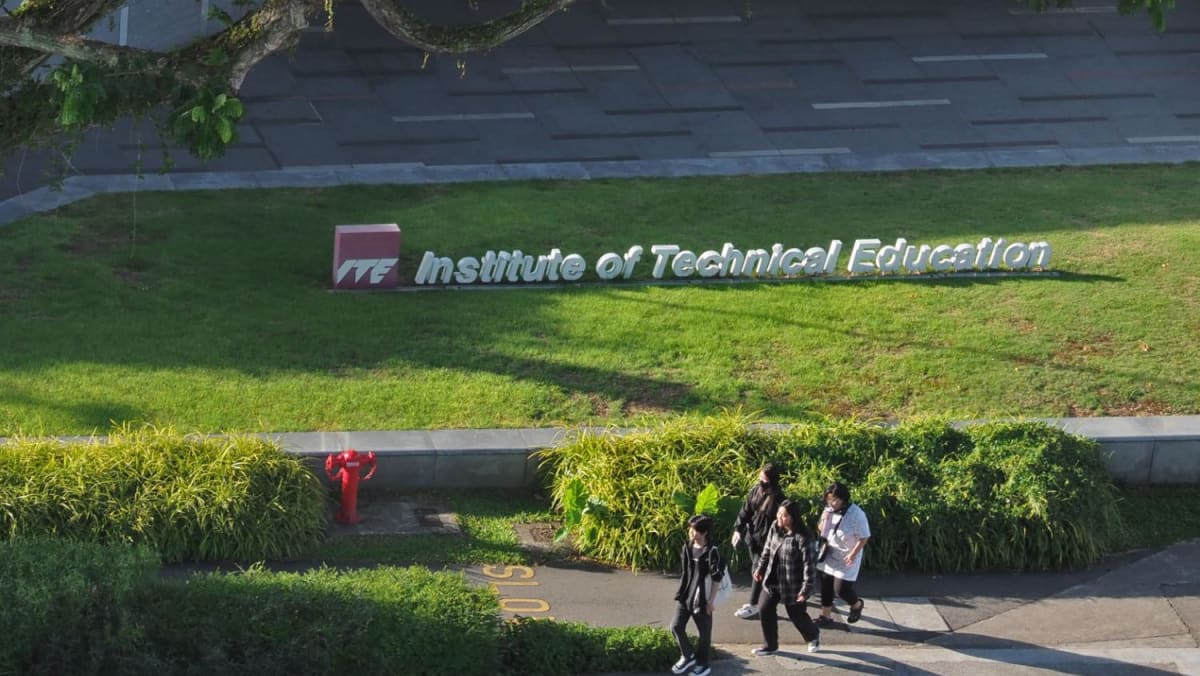
Each week, TODAY’s long-running Big Read series delves into the trends and issues that matter. This week, we look at why there are still stereotypes of ITE students despite the Government pumping in vast resources. This is a shortened version of the full feature, which can be found here.
 By
By
Nur Hikmah Md Ali
Other moves to raise ITE’s profile include having the institute host the yearly National Day Rally since 2013, which Prime Minister Lee Hsien Loong said is a signal to the Government’s “longstanding commitment to investing in every person to his full potential”.
Yet, the institute is still struggling to shake off its image as the school of “last resort”, which experts attribute to the wider societal preference for cognitive or “head” skills over technical or “hands” skills.
WHY IT MATTERS
ITE has come a long way in developing technical education since taking over from its predecessor, the Vocational and Industrial Training Board in 1992.
One significant development was to burnish its credentials, from a “lowly-regarded institution to one that is well-received by the public, parents, students and employers”, according to former chairman of ITE from 1994 to 2007, Mr Eric Gwee, in its 30th commemorative book.
His successor, Mr Bob Tan Beng Hai, told TODAY in an interview that ITE promotes success stories to improve its image, and offers equal opportunities to students to rise to their potential.
“If you go back to the early years of ITE, it was known as ‘it’s the end’. But over the years, we have changed its image by improving its curriculum, taking part in world competitions, and continuously demonstrating success stories.
“Now, even teachers want to teach at ITE because the institute is well-recognised,” added Mr Tan, who was ITE chairman from 2007 to 2019 and is currently chairman of several companies.
According to MOE’s 2022 education statistics digest, ITE received at least S$500 million in recurrent government funding last year, or S$15,258 per student.
This is the highest amount of government funding that the institute has received to date, compared to the last highest amount of about S$489 million it received in 2018.
Such financial support has been channeled to develop ITE in various ways, including boosting its curriculum to be aligned with the latest industry practices.
This has attracted the attention of technical institutes in other countries which view ITE’s courses as technical education par excellence. Panama, for example, has modelled its vocational education institute on ITE.
TODAY also previously reported that ITE’s wholly-owned subsidiary, ITE Education Services, was also helping 25 countries across Asia, Africa and the Middle East, such as Myanmar, India and Nigeria, to develop their vocational training.
THE BIG PICTURE
Still, despite the many efforts over the years to boost the school’s reputation, negative stereotypes of ITE students themselves persist, former and current ITE students told TODAY.
Prior to his admission into the institute, Mr Keane Ko’s secondary school classmates and family members held negative assumptions about ITE students.
“My parents were worried when I told them I wanted to pursue my education in ITE. They were afraid that I would become rebellious and my behaviour would get worse,” said the 23-year-old, who took the aerospace technology course in ITE from 2017 to 2018.
“Some of my secondary school friends also used to joke that ITE stood for ‘It’s the end’. But my teacher told us that we are the ones who decide whether it’s the end or ‘it’s towards excellence’,” he said.
Associate Professor Walter Theseira, an economics lecturer from the Singapore University of Social Sciences, said that the salary gap between ITE graduates and graduates from other educational institutes needs to be addressed.
However, he added, there are many considerations to this, such as whether the industry can support providing higher wages and upskilling, and whether more government policies can support the professionalisation of technical work.
“For example, many safety-relevant roles require professionalisation, such as electrical work and lift maintenance. So there’s quite a complex set of factors to consider in addressing the salary gap,” said Assoc Prof Theseira.
On the salary gap between ITE and polytechnic or university graduates, Mr Tan, the former ITE chairman, said that these groups should not be compared.
“The depth and even the length of study in ITE, which is at least one year, is less than the years of study in polytechnic or university,” he said.
“Still, that does not make ITE graduates any less valuable than their counterparts, and they can always pursue higher education in the future.”
On how ITE students can develop confidence, he said that they should be proud of themselves and confident of what they can achieve.
“Many ITE students come from low-income families and have to juggle part-time work and study to support their families.
“That takes grit and guts, and demonstrates resilience and perseverance in pursuing education despite the odds stacked against them,” he said.